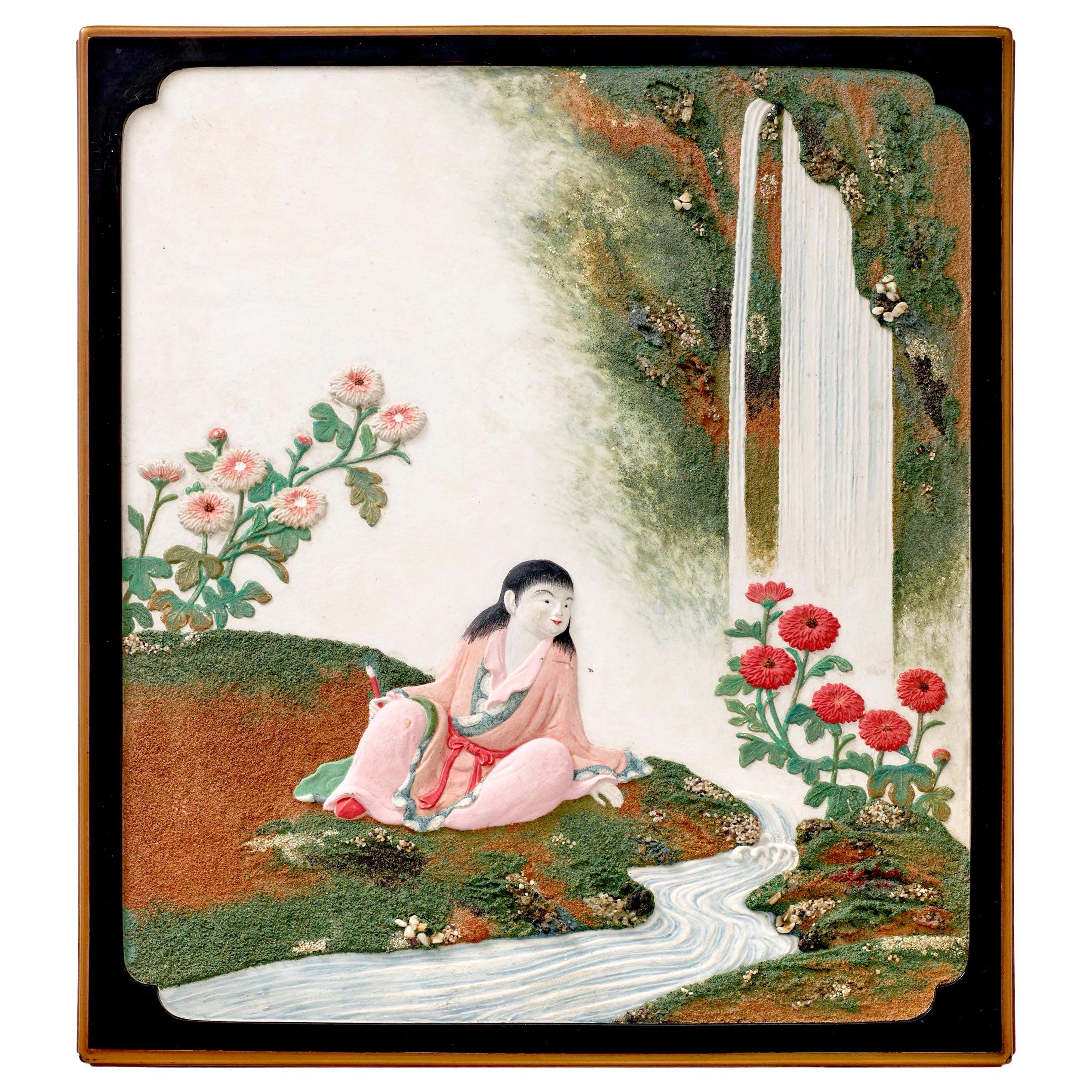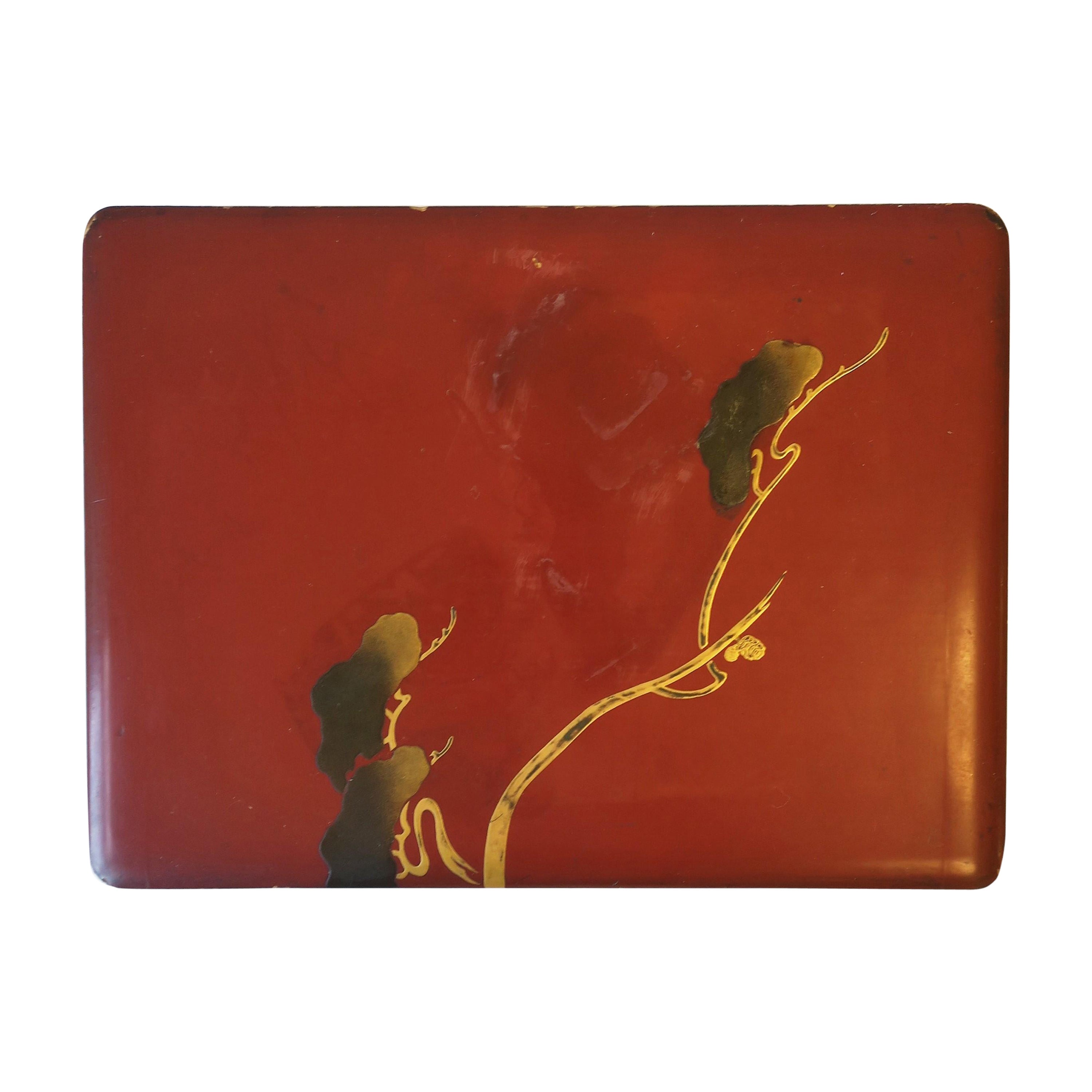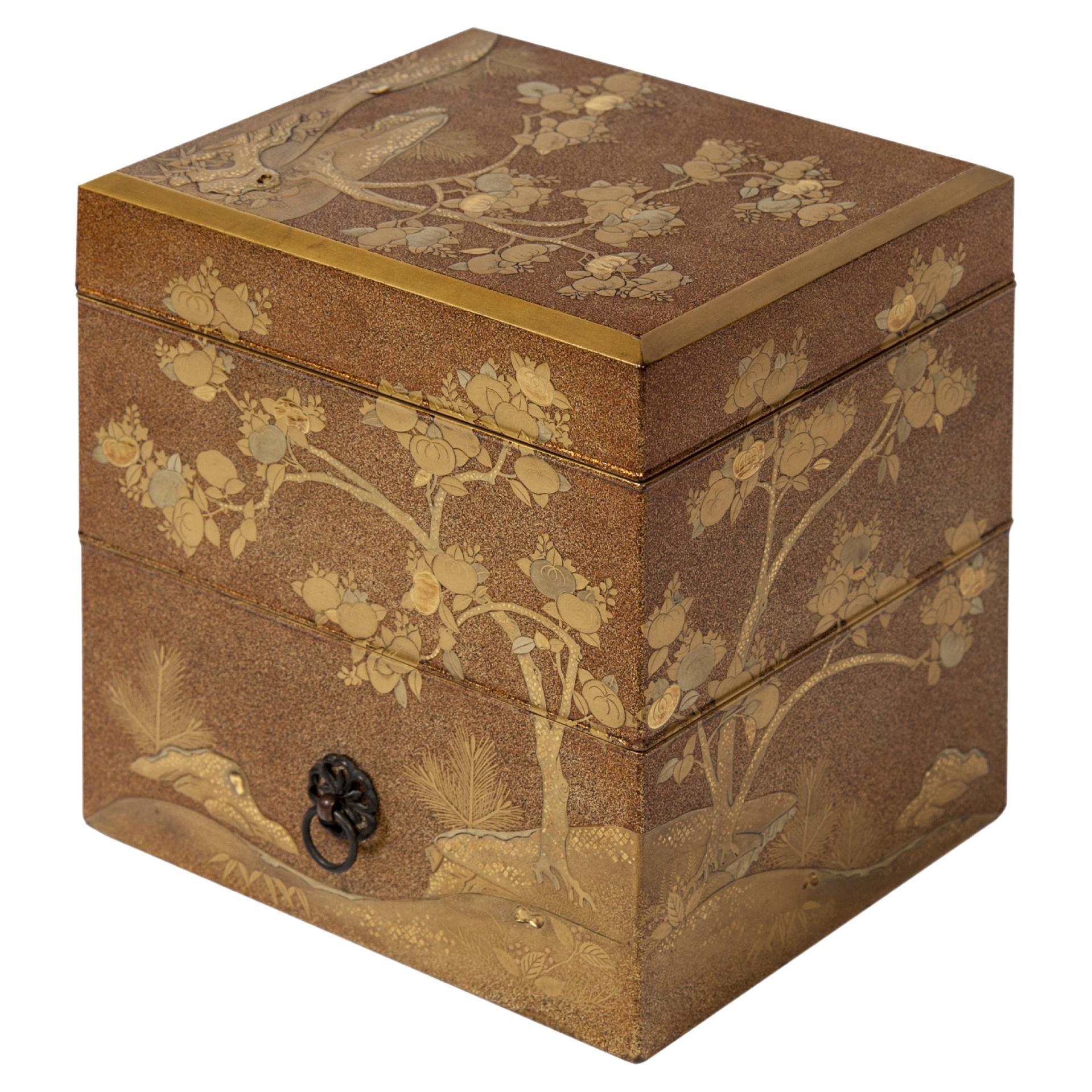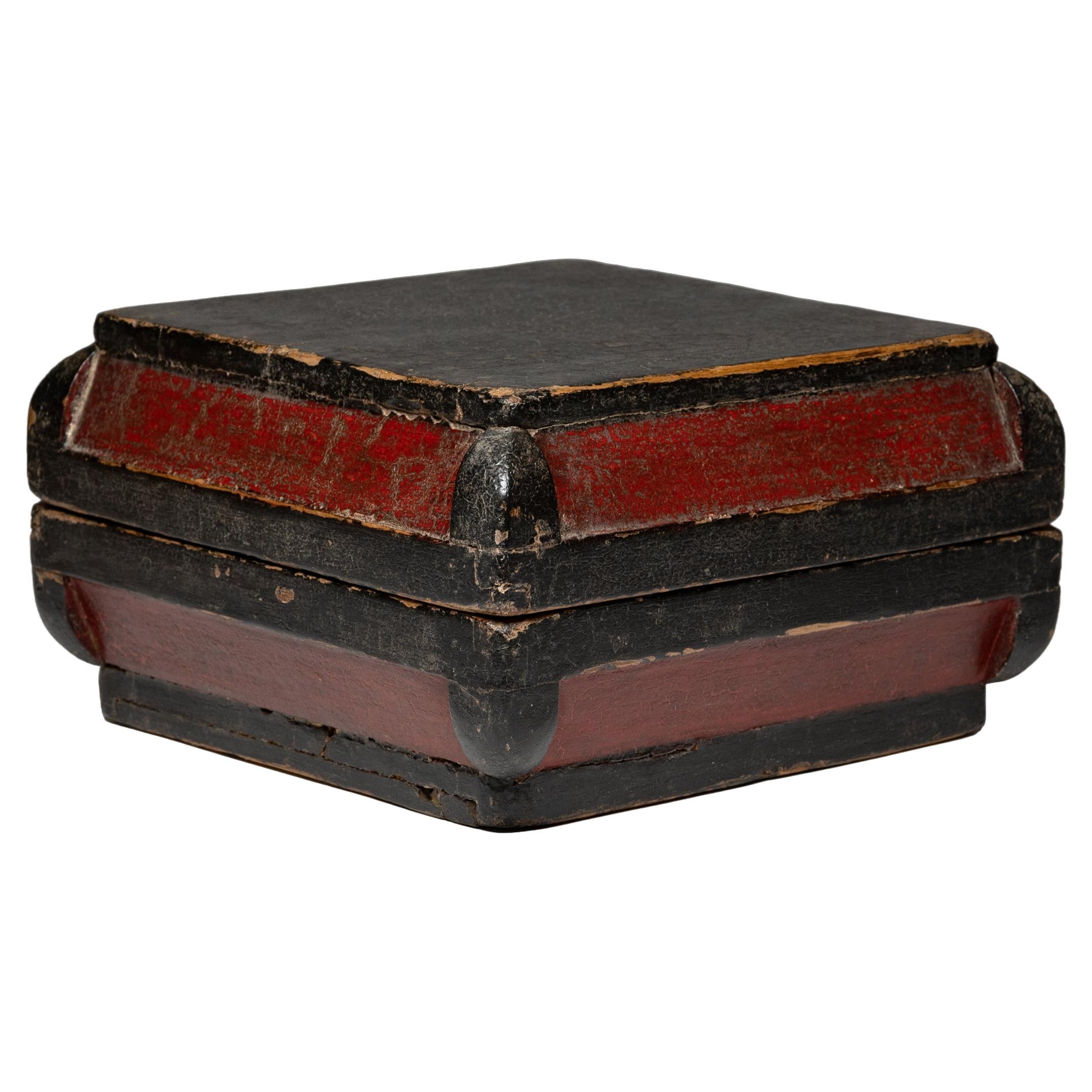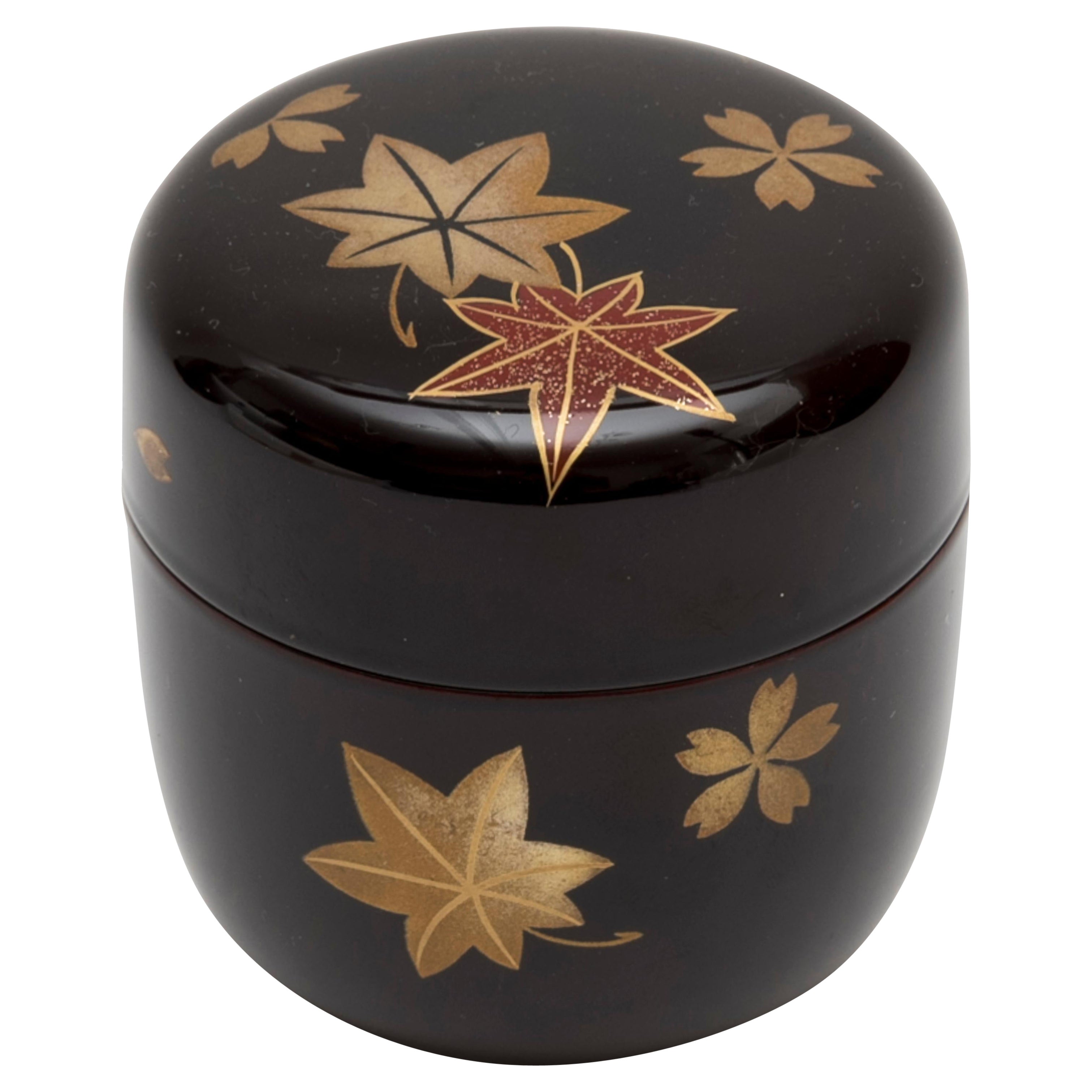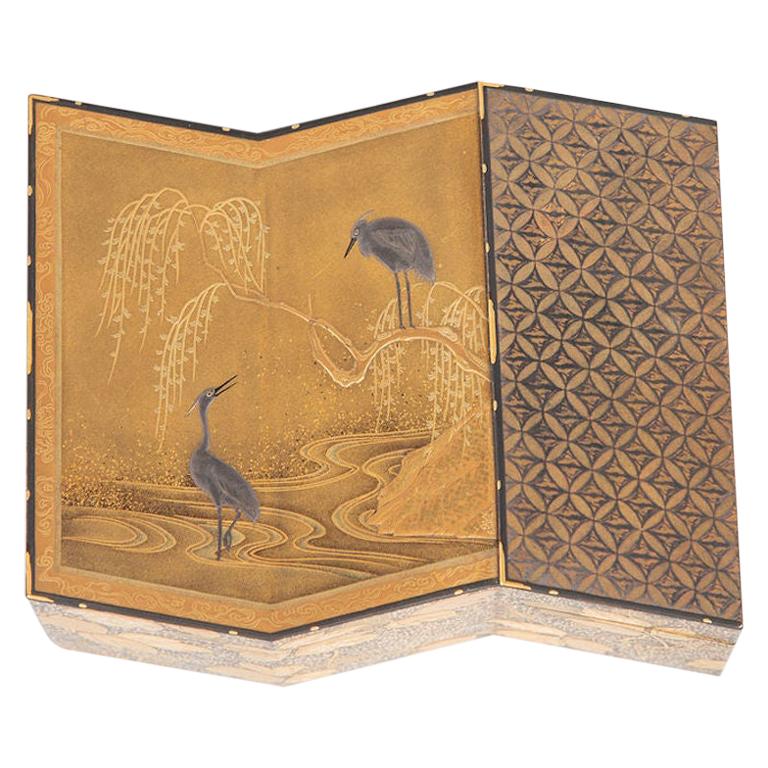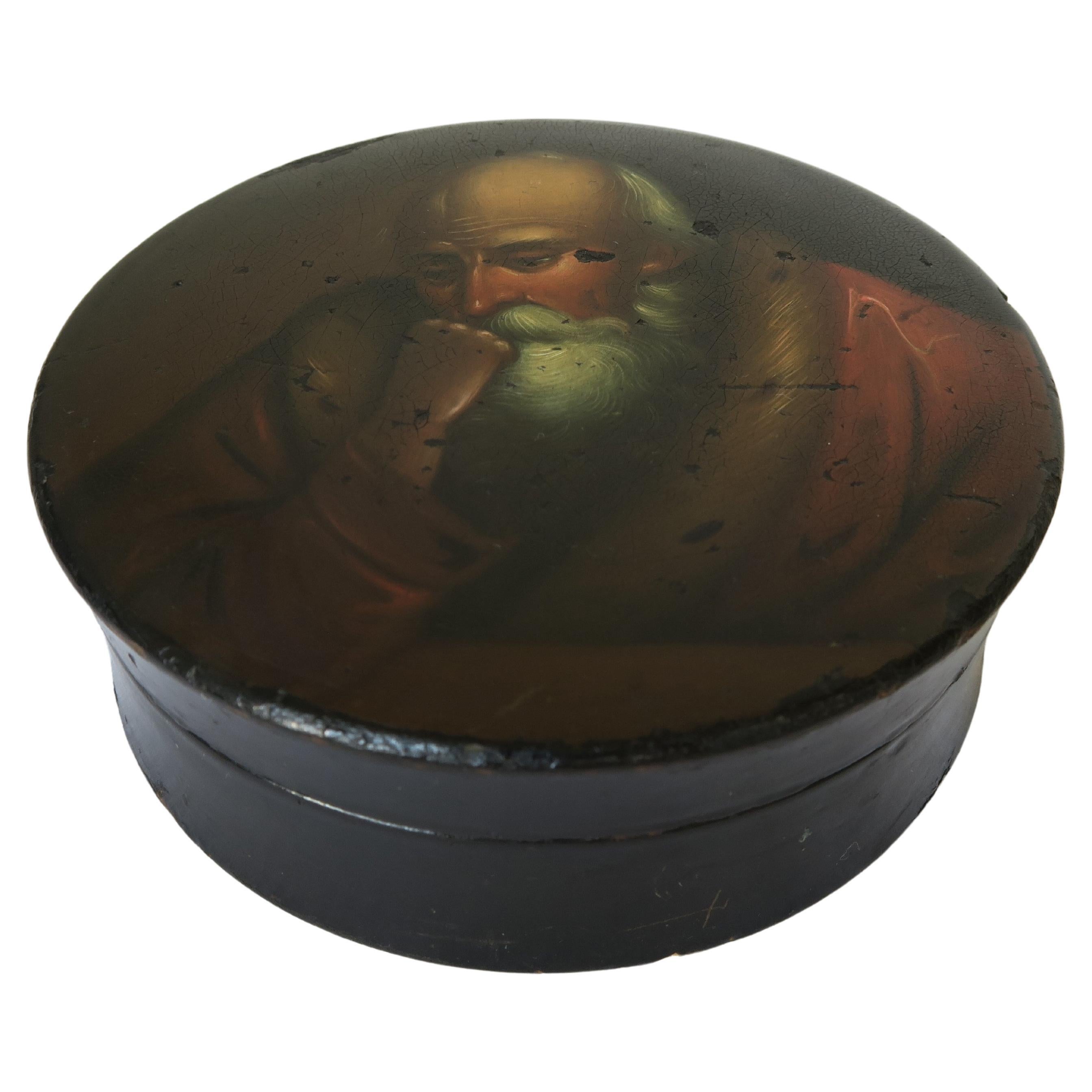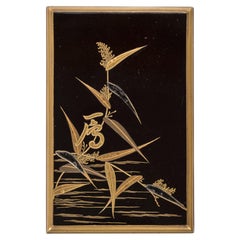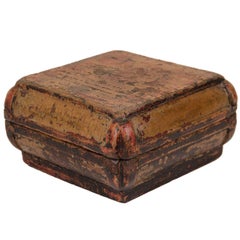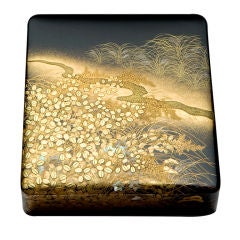
Autumn Field Writing Box
View Similar Items
1 of 10
Autumn Field Writing Box
About the Item
On the inside are bright, stylized cherry blossoms in takamakie raised gold and silver lacquer. The suzuribako comes with its original suzuri ink stone, which is decorated on the edge with gold lacquer and on the bottom with nashiji gold flakes. The box also has the original pure silver suiteki water dropper in the form of a cherry blossom, and two original brushes with covers decorated with nashiji gold flakes. The artist signed the box underneath the ink stone as "Gosaburo saku" (Made by Gosaburo).
Gosaburo was the elder brother of Domoto Insho, the painter. He was born in Kyoto and was taught the technique of lacquer by Tomita Koshitsu, exhibiting widely in Japan from 1928 at the Teiten and thereafter at the Shin Bunten and Nitten. The Baur collection in Geneva includes a suzuribako by Gosaburo, which is decorated in togidashi lacquer with a heron on a snowy willow branch.
The writing box comes with its original fitted kiri-wood tomobako box, which is inscribed on the top "Makie suzuribako yakyo" (Pleasures of the Fields Gold Lacquer Writing Box) and signed on the inside of the lid "Makie Gosaburo saku" (Gold lacquer made by Gosaburo) with a red seal mark reading "Gosaburo saku" (Made by Gosaburo).
- Dimensions:Height: 1.74 in (4.4 cm)Width: 6.78 in (17.2 cm)Depth: 7.6 in (19.3 cm)
- Materials and Techniques:
- Place of Origin:
- Period:
- Date of Manufacture:Showa period, 1930s
- Condition:
- Seller Location:New York, NY
- Reference Number:Seller: T-35341stDibs: U110510898830
You May Also Like
- Rare Japanese Lacquer Writing Box Suzuribako Meiji PeriodLocated in Atlanta, GAA Japanese Lacquer writing box Suzuribako Meiji Period (1868-1912), likely circa late 19th century. This suzuribako is one of the most unusual boxe...Category
Antique 19th Century Japanese Japonisme Lacquer
MaterialsLacquer
- Japanese Tiny Suzuribako 'Writing Set'Located in PARIS, FRTiny suzuribako (writing set) in black and gold hiramaki-e lacquer with water plantain (Alisma plantago-acquatica) decoration. Interior in nashi-ji lacquer, with a rectangular water cup...Category
Antique Late 19th Century Japanese Lacquer
MaterialsLacquer
- Lacquered Food BoxLocated in New York, NYA beautifully worn Chinese lacquered food box. From Shanxi Province, circa 1900.Category
Early 20th Century Chinese Lacquer
MaterialsElm, Lacquer
- Japanese Lacquer BoxLocated in New York, NYA Japanese red burgundy, gold and black lacquer box with round corners and silk cloth interior lining, circa early-20th century, 1920s, Japan. Box was desi...Category
Early 20th Century Japanese Decorative Boxes
MaterialsWood, Silk
$900 Sale Price28% Off - Lacquered Storage Box, c.1850Located in New York, NYAn unusually shaped and graceful weathered storage box, with beautiful lacquer patina. From China, Shanxi Province, c. 1850. BX470Category
Antique 19th Century Chinese Lacquer
MaterialsLacquer, Wood
- Japanese Lacquered Tebako 'Box'Located in PARIS, FRTebako box with three compartments in golden and nashi-ji lacquer, decorated with golden, red, and kirigane lacquer, golden persimmon tree leaves, among rocks. The compartments are of increasing size from the top. The decoration is in continuity. Persimmon has been cultivated in southern China for more than 2500 years and is believed to have been introduced to Japan in the 8th century. The veneer is a tree with very hard wood, similar to ebony. According to a legend, one specimen survived the atomic bombing of Nagasaki on August 9, 1945, close to the epicenter. It is therefore in Japan a symbol of strength and longevity. It is also the national fruit of the country. It is eaten as a traditional dish during New Year's Day celebrations. Tebako literally means "portable box...Category
Antique 1860s Japanese Lacquer
MaterialsLacquer
Recently Viewed
View AllMore Ways To Browse
Sake Ewer
Leather Top Side Table With Drawer
Antique Nightstand Tables
Round Platters Glass
Side Table With Drawer And Doors
Black Chest Legs
German Blue Crystal
Mid Century Modern Bathroom Mirror
Solid Log
Louis Xv Rocaille
Wood Settee With Back
Serapi Navy
Ceramic Table Top Lamp Pair
Modern Leather Dining Chairs Pair
Baroque Style Wood Frame
Accent Cabinet Small Cabinet
Mirror Dresser With Drawers
Folk Art Wooden Carving
